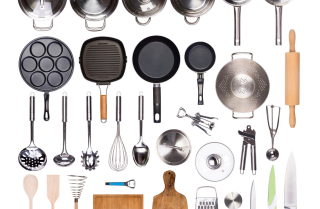Dehydrating is one of the oldest methods humanity came up with to preserve food and it’s also a method chefs use to achieve a particular flavor. Dehydrating can have practical benefits at home as well, so here’s a quick and easy guide to get you started on dehydrating everyday food at home.
Possible Drying Ingredients and Foods
So, what should you try drying first? Here’s a list of ingredients to getting you started.
Fruits
Fruits are notorious for taking quite a while to dry, but they’re also very delicious when fully dried. A popular fruit that gets dried often is grapes - they turn into raisins when dried. Other choices include bananas, apples, apricots, and cherries. If you want to try something tropical, dried mango is a popular snack in many countries.
Meat and Fish
You can dry plenty of meats to get rid of bacteria and make them edible for consumption. Beef is a popular choice, but most red meats should be just fine. Even white meats such as chicken and turkey work. Drying fish is also very common and many cultures incorporate dried fish into their daily diets.
Vegetables and Nuts
Whether it’s carrots, onions, walnuts, or peas, any plant-based food with moisture can be dried to be preserved. These foods are often dried to be used in various stews.
Drying Methods
Despite sounding like a simple concept, there's actually takes quite a bit of depth that goes into the process. Here are some of the most popular methods used when drying ingredients.
Sun Drying
The traditional way of drying many foods, sun drying involves placing the ingredients under the sun's heat. While it isn’t as quick as using ovens or microwaves, sun drying does involve a bit of heat, and results can be achieved in less than a day for some foods. However, if you’re drying fruit, expect to wait a few days before getting any results.
Air Drying
Air drying involves getting rid of moisture from the food without it being exposed to the sun’s rays. The sun can harm certain herbs and components of food, and the shade offered by air drying solves this problem. As a result, this can take quite a bit of time, but the results are worth the wait.
Oven Drying
Oven drying is a modern alternative to ancient drying methods, and it involves placing food on a low rack with sub-140°F temperatures. The oven door has to be open, too, so that the moisture escapes while you dry. Note that you need the oven to be able to heat below 140°F, as temperatures higher than this can result in your food getting cooked instead.
Microwave Drying
Microwave drying is possible, but the main downside is that you can only dry a few ingredients at a time. Herbs can dry within a few minutes and fruits will generally dry up within an hour. It’s not the best food dehydrator, but it’ll serve you well in a pinch.
Conclusion
Drying ingredients can be a fun pastime that can introduce some new meals to your life. It’s simple and relatively straightforward, and with a little patience, you’ll get great results. It’s hard to mess up drying and it’s worth giving it a shot if you want to try something new. Be sure to check our best list guide on the best food dehydrators to find exactly what you need!






